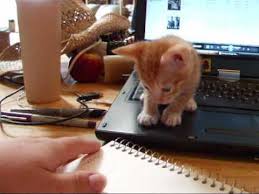THE CHANGE WIZARDS
Changing People And Transforming Organizations
Victor S.L. Tan
To get people to
change, leaders must first understand how people become change-shy and develop
strategies to eliminate this phobia.
Victor mentioned about the two critical ways in leading change that is
adapting to change and creating change. Leading change is about adapting to change
when it is necessary and creating change when it is opportunistic.

Many leaders
today are becoming irrelevant.
They do
things that have little impact on their organizations.
They run from meetings to meetings,
continuing the old ways of doing things.
To stay relevant in a rapid changing environment, leaders need to take
strategic roles.
Besides releasing the
trapped minds of individuals, leaders need to move forward by changing their
mindsets to align to the realities of the environment.
Leaders need to get people to question
outdated assumptions which were true and relevant in the past but are no longer
so now.
Leaders can no longer wait for
opportunities to come before they start their improvement initiatives.
MOTIVATING PEOPLE

The important
role of leaders are to energize the workforce and help fine excitement, growth
and meaning in work.
Leaders need to
really understand the corporate culture of the organization and must realize
that the power to motivate people goes beyond monetary rewards.
To motivate people is to know ways to
motivate them.
The workplace can be
stressful if bosses do not know how to manage people in a joyful manner.
Empowering others by
learning to let go and let others do the work.
There’s more joy in managing people when you
get them to produce better results with lesser intervention.
In
leading people, getting things done requires touching the hearts, minds and
passion of individuals.
Persuading
and convincing will be a better way.
DEVELOPING PEOPLE

The most
misunderstood concepts in the corporate world are professionals and
professionalism.
Professionalism is all
about one’s practice with regard to knowledge, skills and experience including
one’s character and conduct.
Credibility
of leadership comes from professionalism.
It was found that the leader’s professionalism is actually what really
motivate and inspire the employee.
There
are ten key characteristics which are most desirable of a leader’s
professionalism:
1. Have an open mind and are good
listeners also encouraging people to speak out without fear will help to
uncover the ‘blind spot’;
2. Objective and impartial;
3. Competent and committed;
4. Have great interpersonal skills and treat people with
respect;
5. Inspire and encourage others to act;
6. Calm and collected during crises;
7. Provide direction and support;
8. Develop and reward people;
9. Committed to positive and productive change; and
10. Courageous to take the necessary action to achieve the
desired goals.

The differences between
leaders who are knowledgeable about good managerial practices and leaders who
really practices them:
1. They know that they should smile more BUT they often show
glum faces;
2. They know that they should be
patient BUT they interrupt in the middle of sentences of their subordinates;
3. They know that they should listen
for explanations BUT they shoot first from their mouth before asking;
4. They know that they should praise
people in public and reprimand them in private BUT they do the opposite;
5. They know that they should ask the
opinions of others BUT they only keep giving their own opinions.

There’s this
famous expression ‘you can lead a horse to a river but you cannot force it to
drink’.
But a good trainer knows that
while he cannot force the horse to drink, he can make the horse want to
drink.
Managing people professionally is
more than just getting people to achieve goals effectively and efficiently, but
also requires the leader to grow and develop people.
One of the most
common causes for unproductive competency is that people are not given the
opportunity to put to practice what they know.
There is a gap between know something and actually doing it. Therefore it is the role of leaders to
understand what kind of competency individuals have and seek ways to fully
utilize them. This is because, the key
strengths of an organization lies in the competency of its people.
SUCCESSION PLANNING
A recent survey
of Asian organizations indicated that 86% of them do not have a succession plan
in place for top positions. 14% said
they have a succession plan but more than half of the 14% do not implement the
leadership development programs. Today succession
planning has become a critical issue again.

Succession planning
can be defined as the ongoing process by which top management identify and
groom the right people to be ready at the appropriate time to manage the
company successfully.
Succession planning
allows smooth transition of leadership and it also helps organization identify
the potential talent pool.
Early identification
allows time to develop these talented people and help strengthen corporate
culture.
The key success of the
succession planning is to identify the critical leadership success factors that
is the competencies and qualities required.
SELF DEVELOPMENT

The greatest
tragedy in the corporate world is there are not many leaders.
Most just follow, comply with rules and
regulations and maintain the existing practices.
No improvement is done despite the compelling
forces all around requiring change.
The managers
or so call leaders are
afraid to be open
about things and they are
wimpish in
addressing disciplinary issues.
The great
error is to approach the disciplinary issues in a soft manner.
These so call leaders are
risk adverse person, usually
hiding under the cloak of management
and
do not utilize their authority.
They are
slow
to take on more responsibilities,
lack
confidence and like to
embrace the
status quo.

Leaders in
organizations are required to increase their level of Leadership IQ which
actually refers to the ability of leaders to lead people to achieve goals and
at the same time create happy customers and employees.
There
must exist a balance between performance, customers satisfaction and employees
well-being.
There are twelve ‘I’s
that leaders must learn to increase their quotient in order to achieve overall
effectiveness that is inspire, illuminate, illustrate, involve, innovate,
inform, impart, influence, initiate, inquire, improve, and implement.

Excellence is
defined as the condition of excelling or surpassing some standards of
expectation.
There are four key areas of
excellence which are process excellence, product excellence, policy excellence
and people excellence.
However, the most
important is the people excellence since without them the organization will not
be able to have the other three excellences.
 One of the greatest values of the human
resource as an asset is the ability of people to learn, improve and grow
One of the greatest values of the human
resource as an asset is the ability of people to learn, improve and grow.
Attitude is also important because with
positive attitude there exist more enthusiasm and energy to make things
happen.
Upgrading one’s knowledge and
skills in various areas of work is a fundamental way to achieve
excellence.
Since excellence is a moving
target, everyone in the organization has to possess the sense of adaptability.
Another area which must be addressed is the ability
to appreciate.
Appreciating what they
already have and stop asking for more.

The simple
illustration of accountability can be shared through the EVERYBODY, SOMEBODY,
NOBODY and ANYBODY story.
Four members
of a team, EVERYBODY, SOMEBODY, NOBODY and ANYBODY were asked to work on an important
project.
EVERYBODY was sure SOMEBODY
would do it.
ANYBODY could have actually
done it but NOBODY did it.
SOMEBODY got
angry because it was EVERYBODY’s job.
EVERYBODY
thought ANYBODY could do it but NOBODY realizes that EVERYBODY wouldn’t do
it.
It ended up EVERYBODY blamed SOMEBODY
when NOBODY did what ANYBODY could have done





